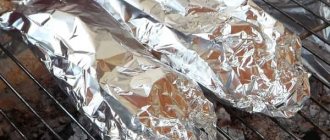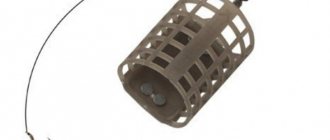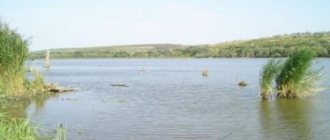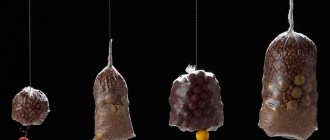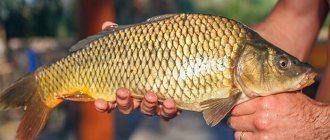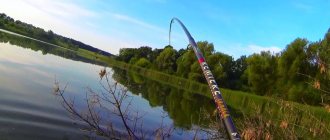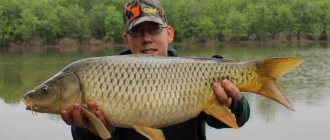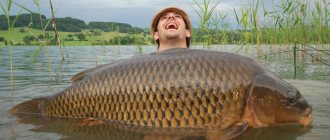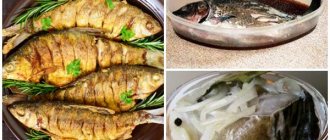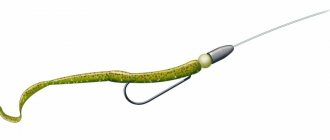- Publikowany 3 kwi 2018
- ? The 360 rig is designed to give as much freedom as possible to the movement of the hook. It can easily rotate 360 degrees (hence the rig gets its name), and this gives great flexibility to the entire rig. This equipment should be used with a floating bait, as this will lead to its correct location on the bottom of the reservoir. A 360 rig with a properly selected pop-up sinks very slowly, smoothly lying on the bottom of the reservoir. The stiff mono line acts as a lever and allows the hook to fall to the bottom away from the sinker, allowing for good presentation of the bait. ______________________________ ? Hooks: goo.gl/8LfSJN goo.gl/vq4cLG goo.gl/cV45Ki ?Swivel on hook: goo.gl/Fr6jKF goo.gl/RbREJE ?Swivel with ring: goo.gl/R7eSyR - size 11 goo.gl/Bc9diB ?Hook stoppers: goo.gl/T8T8oD goo.gl/WPqgPt ?Stopper for boilies. ay? FB facebook.com/carptoday ? Instagram instagram.com/carptoday/
- fishing carp fishing carpfishing carp carp fishing carptoday fishing equipment 360 360 rig carptuday carp fishing carp fishing carp fishing carp fishing carp fishing video fox team russia carpfishing russia carp fishing russia carp fishing carp fishing 2018 how to catch carp carp fishing for beginners how to tie a carp line ok how to tie a carp leash carp equipment installation of carp equipment carp leash how to tie a leash
plclip.com
Feeder equipment for carp
Rod
When catching small carp (1-2 kg), when there is no need to throw the equipment far, it is better to use light picker rods 2-3 meters long, with a test weight of about 30-40 g. Especially if the depth at the fishing point is shallow. This way you won’t unnecessarily frighten the fish with the blows of heavy feeders, and your tackle will be as sensitive as possible.
More profitable rods for carp anglers are carbon fiber feeder blanks with a dough of 60-120 grams, 3.9-4.2 m long. The action of the rod is fast or medium.
When fishing at the longest distances with heavy method feeders, it is better to use more powerful forms with a dough of up to 150 grams.
Coil
Inertia-free power, with a spool size of 3000-4000, in order to fit at least 150 meters of fishing line on it, with a diameter of 0.25-0.3 mm. You will need such a large amount of fishing line on the spool when the hook swallows a large specimen. The carp will try to go as far as possible into the saving depths and will remove dozens of meters of fishing line from your spool.
The reel must be equipped with a friction clutch, preferably a rear one, as it is easier to adjust during fishing.
If when fishing, you are not always near the feeder, then it is better that your reel is equipped with a baitrunner system, this will protect the rod from falling into the water when a large carp bites.
fishing line
Monoline under tension tends to stretch and absorb sharp jerks of strong fish, so for carp equipment it will be a more reliable option than braided line. The diameter of the fishing line is 0.25 - 0.3 mm; only in cases where you hope to catch carp weighing over 10 kg, try using a fishing line with a thickness of 0.35 mm.
When fishing at a picker distance (15-20 m from the shore), the feeder equipment for carp can include braided fishing line, since the elasticity of the monofilament in this case will not be much higher than the braid.
Fishermen who use braid instead of monofilament line often use feeder rubber to dampen strong jerks.
When casting heavy feeders, we cannot do without a shock leader, otherwise shooting of the feeders cannot be avoided. The shock leader is made in two rod lengths.
The thickness of the leads is 0.04 mm less than the main line.
Hooks
Catching carp on a feeder requires the use of only high-quality hooks made of durable steel and having a well-sharpened tip. Poor quality hook, large carp can bend. Hooks depending on the size of the fish No. 14-10, according to the international classification.
Feeders
The flat-method feeder is an integral attribute of feeder rigs for carp. It is ideally suited for fishing in silty areas of the ground.
To catch carp at the longest distances, feeder feeders with forward-positioned “rocket” feeders or drop-shaped method feeders are used. They have the best flight characteristics.
If there is an abundant amount of aquatic vegetation at the fishing point, then it is worth using plastic feeders equipped with wings on the sides, which, when fishing, allow you to quickly bring the tackle up, reducing the likelihood of snagging.
Tackle for Carp Fishing | Choosing the Right Gear
To successfully catch any fish, not just carp, you should carefully consider the choice of the necessary equipment, starting with the rod itself and ending with the hooks. Since each fish has its own character, this must be taken into account when choosing gear.
The size of our prey can vary from several grams to several kilograms, and trophy specimens can reach several tens of kilograms. Therefore, durable equipment will help cope with the weight of large fish and its obstinate nature.
The head of all equipment is the Rod ; the successful capture and landing of prey depends on its strength and other factors. Since carp is a large and strong fish that can provide decent resistance when fishing, the rod must be strong. Rods reinforced with carbon fiber or fiberglass are not as sensitive, but will help you catch large fish and increase the chances of pulling them ashore;
The reel must be of high quality and easy to use. It may be an ordinary open coil, but there is a possibility that with a strong jerk it will rip out. Therefore, it is better to purchase a good reel once than to constantly buy cheap options;
A huge role in the equipment is played by the fishing line , the thickness of which determines not only the successful landing of fish, but also the maximum weight of prey. Despite this, there is one caveat - carp is a cautious fish, so the less the fishing line is visible, the better. Now in stores you can find fishing line 0.3 mm thick from various materials that have minimal light refractive indexes;
Sinkers should be selected in accordance with the color similarity with the bottom. After all, the less your trick stands out, the better;
The hooks chosen are dark, the size range is from 8 to 14. The hooks must be strong and of high quality, because a large fish can be caught and the slightest tug will simply break a low-quality product.
Simple and Inexpensive | Carp fishing for Beginners. Video
Feeder rigs for carp fishing
(Inline) Running feeder
A very convenient equipment for catching carp on a feeder, which can be used on almost all bodies of water. In addition to high sensitivity, the advantage of inline feeder equipment is that when biting, the fish does not feel the weight of the feeder.
It is better to move away from the swivel method of attaching the feeder to the equipment, replacing it with a bead. In carp rigs, large beads with a large internal diameter are used; such a bead glides perfectly along the fishing line.
In principle, you can immediately attach the feeder to a fishing line. But for carp, like any other fish, it is better to have a small outlet, 5-25 cm long, which will give us the “paternoster effect”. We will have a small shoulder, which will further level out the heaviness of the feeder when biting. A long outlet of 15-25 cm is necessary when fishing in a heavily silted reservoir or in places with tall grass.
Typically, fishermen use bends 7-8 cm long, since the disadvantage of long bends is the possibility of overlapping gear.
It is also worth considering that if you want to avoid overlaps, then when your equipment is in a suspended position, the outlet for the leash should be at least a couple of centimeters below the outlet for the feeder. If you fish with long leads, then the twist for the leash should be made short 5 cm, from a thick fishing line of 0.3 mm, in this case your lead will stand rigidly to the side, reducing the likelihood of tangling the tackle.
The tackle is knitted like this:
First we make an outlet for the feeder. To do this, take a piece of fishing line, thread a swivel with a clasp on one side, a bead on the other, and tie them to the outlet using any fishing knot , such as a “clinch.”
Now we knit a twist, for this we take a fishing line with a thickness of 0.25-0.3 mm, fold it, hold it with the thumb and forefinger and begin to twist in one direction (see Fig. 1), so that at the exit we form a small ring, where we will strengthen the leash, tighten the twist (see Fig. 2). The twist is made 15-20 cm long; at the end of our twist, we knit a figure eight loop in order to protect it from spontaneous unraveling. The mustache that remains after tying the twist is trimmed to zero.
Next, we take our main fishing line, which is on the spool, and pass it through the bead (to which the outlet for the feeder is attached), then we thread the silicone stopper.
Then we connect our twist to the main fishing line, such a knot with which we tie the hook with a blade to the fishing line (imagining our twist as the shank of the hook).
Feeder equipment for carp with a feeder method
Among fishermen, two methods of installation are practiced: blind and inline.
Deaf
The blind is a self-cutting rig and is suitable for fishing with several rods.
We pass the main fishing line with a thickness of 0.25-0.3 mm (depending on the size of the expected carp) through the feeder. On the extended edge of the fishing line we knit a swivel onto which we pull the connector, then we pull the opposite edge of the fishing line, ensuring that our swivel and connector fit firmly into the body of the feeder.
A leash, 7 to 10 cm long, will then be attached to the swivel.
Then, on the opposite edge, we retreat 35 cm of fishing line and tie a swivel to the fishing line. The tackle is ready.
The swivels must be selected so that they can fit into the body of the feeder. Anglers who fish on a catch-and-release basis use leadcore.
Catching carp on a feeder with equipment inline method
The diameter of the fishing line is similar to the previous one. We take a piece of fishing line 40 cm long and knit a swivel at one end. We pass a silicone stopper through the opposite one, you can use a bead, the main thing is that its internal diameter does not allow it to freely walk along the fishing line. The purpose of the bead is to prevent the swivel from getting stuck in the body of the feeder and to protect the assembly from damage. Then we pass the feeder, behind it again there is a silicone stopper and on the edge we knit a swivel or make a loop to which the main fishing line will be attached.
Many feeders in carp fishing began to use flat-method feeders equipped with Feeder Gum or Power gum feeder rubber. Thanks to this, when fishing we have an additional degree of depreciation.
Another good installation option would be a Gardner loop (Paternoster).
Where to look for carp for feeder fishing
Carp chooses stagnant bodies of water or bodies of water with a weak current (ponds, river bays, creeks, rates, lakes, reservoirs, slow-flowing rivers). The bottom in such places should be soft (silty, clay), while carp can also be found in areas with a hard, non-rocky bottom. Carp is very fond of water areas densely covered with aquatic vegetation. As a rule, carp lead a school life, and only trophy specimens can keep to themselves.
When coming to a pond, pay attention to the areas where the carp jumps out of the water; in this place it feeds, and the probability of being caught here is quite high.
Promising fishing areas
driftwood
Carp loves places near flooded trees, stumps and snags, especially if the snag is located at the exit from the depths (hole) near the shore. Fishing in such areas is associated with a high degree of risk.
But if you throw the tackle near the snag and constantly monitor the feeder equipment for the carp, avoiding slack in the lines and immediately after the bite, make a hook, then you will not allow him to hide among them during fishing and break off the tackle.
Trees hanging over the water
Particularly promising are places where trees overhang a deep-water and steep bank or pools. Of course, such areas are better suited for floaters, although they will also be quite inconvenient for them. Alternatively, move a little to the side and throw the tackle at an angle or fish this area from the opposite bank.
Island
Often carp stand on the edges near the islands. If distance allows, probe the bottom on the approaches to the island and select a promising fishing point.
Aquatic vegetation
And finally, catching carp on a feeder at the edge of aquatic vegetation. In such areas it is also necessary to keep your eyes open and ensure that the carp on the hook does not go into the algae or reeds.
Studying the topography of the bottom of a reservoir
Of course, most feeder operators try not to catch carp in places that are inconvenient for feeder equipment, preferring long-distance casting.
In this case, we cannot do without a thorough study of the bottom topography. Our task is to find bottom areas with various differences and changes in depth (pit, slope, folds).
To study the bottom, fishermen use a marker float or a weight that is dragged along the bottom. If the weight falls or hangs, this indicates the presence of a hole here; if you feel that the weight is being pulled with resistance, it means that the rise has begun.
Also, with the help of a load, you can determine the type of soil when you feel a slight tension - this indicates the presence of a soft muddy bottom. If the load moves with a noticeable shaking, it means you have landed on a rocky bottom covered with shells. On hard and level ground, the load will move freely and evenly.
Studying the bottom topography is best done using a braided line, since it is more sensitive than monofilament.
Having identified a promising area, we fix the casting distance by applying a mark (about a meter long) to the fishing line with a marker or by throwing an elastic band on the spool in this place. You shouldn’t hook the fishing line to the clip, because in this case you won’t be able to use the clutch or baittrainer, and if you cast too hard, there is a possibility of the gear breaking.
Read more about how to measure the depth in the article Feeder for Beginners .
Carp. Briefly about Fish | Description and Photo
Carp is a rather unpretentious fish, but at the same time it has its own characteristics and favorite places. It can live both in small ponds, but quite deep, and in lakes and other bodies of water with a small current.
He loves to eat plant foods, for example, young green algae, so he can often be found near reeds and other vegetation.
In terms of live food, it prefers dragonfly larvae, earthworms, bloodworms, and maggots. As you can see, the diet of carp is very diverse, which gives a wide choice of fishing gear.
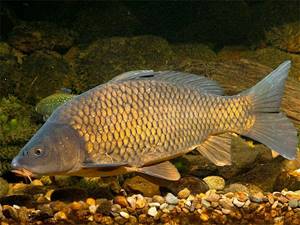
It should be noted that it is carp fishing in the spring that begins to bear the first fruits; in April - May, the carp begins its active feeding in order to gain strength before spawning. This means that the fish are happy to leave secluded places in search of food, which gives a greater chance of catching.
Undoubtedly, shallow places heated by the sun to 15 degrees attract our prey, and vegetation with snags remains the predominant place for its hunting for worms and larvae, but the carp does not avoid other waters in order to feast on it.
Therefore, when choosing a place, it is necessary to take into account the active movement of the fish in search of food in the spring.
Catching Carp on Feeder in Early Spring | Video
Fishing for carp on a feeder in spring, summer, autumn
Spring
Carp loves warmth, so they begin to catch it at the end of April or beginning of May, when the water warms up to 10 degrees. Before the end of spawning, you shouldn’t count on an intense bite, but after that, the carp will begin to eat.
At the beginning of spring, carp should be looked for in shallow rivers with a calm current, here the water heats up faster and is enriched with oxygen. It can also be found near the shore in the reeds or in shallow waters located far from the shore - “tables”.
Carp especially likes to visit tables when the weather is calm and sunny.
In spring, carp prefer animal baits, which should also be added to bait.
Summer carp fishing
A feeder, in hot summer weather, will be simply irreplaceable, since at this time the carp tries to move away from the shore into the depths or hides in holes with a silted bottom. Also, in hot weather, it can be found near places where a spring comes out of the ground and the water is cooler.
To escape the heat, carp can take refuge in places overgrown with aquatic vegetation or in darkened areas of the reservoir. Therefore, the best time to catch carp in the summer is early morning and evening, when there is no heat and they are actively feeding.
In small and shallow reservoirs, with prolonged heat, or, conversely, abnormally cold weather for a given period, the bite may disappear altogether.
A good time for carp fishing is a warm, rainy day.
It has also been noted that carp activity increases before heavy rain or thunderstorms, and in order not to miss this moment, your carp feeder equipment should always be at hand.
Autumn
At the beginning of autumn, carp tries to gain fat before winter and behaves quite actively. Moreover, it is when fishing in the fall that the probability of catching a trophy carp is highest.
In the morning and evening, it is at depth, but closer to midday, it comes out into shallow water covered with silt, especially on sunny days. The following is also considered good weather for carp fishing:
Warm and cloudy weather, with southerly winds;
Warm drizzling rain;
In autumn, carp can be found in the waters of small rivers and streams.
Good places for carp fishing will be areas with aquatic shellfish and the border between muddy and hard bottoms, and the feeder equipment must be thrown onto hard ground, as close to the mud as possible.
When the temperature of reservoirs drops to 12 degrees, the activity of carp drops, and it begins to look for places to winter.
If the temperature rises sharply during this period, then the carp may become active again. But it will feed not far from its wintering grounds. When the water temperature drops to 5 degrees, the carp begins to enter suspended animation.
Nozzles
In spring and autumn, animal baits are more of a priority
- Maggot
- Worm
- Bloodworm
In summer, along with animal baits, carp actively bite on:
- Sweet corn;
- Green peas;
- Diced, undercooked potatoes;
- Pearl barley porridge;
- Mastyrka;
- Undercooked pasta;
- Pellets.
Very effective are sandwiches (a combination of different baits on one hook), for example a worm and corn, maggot and semolina.
Feeder equipment for carp with hair mounting is catchy (see picture).
Features of feeding carp when fishing on a feeder
Privada
Ideally, bait the carp to the selected fishing point in advance. First, we determine future fishing locations. We choose them at a considerable distance from each other. If possible, then we attach the fish three days before the start of our fishing, if not, then at least a day before, feeding it in the morning and evening. The bait must be thrown at the same time, which should coincide with the time of your future fishing.
In warm water, the bait may include: boiled potatoes, dough, pasta, boiled beans, beans, bread crusts, porridge. Typically, fishermen mix 5-6 ingredients. In cold water, a worm, maggot, and bloodworm are added to the bait. You can also add flavors to the spice, such as garlic, strawberry, banana, anise. It is worth remembering that sweet smells go better in summer, spicy ones in early spring and late autumn. Privada is pre-mixed with soil in a 1:1 ratio.
Lure
Of course, most fishermen do not have free time to hook fish and they, taking their feeder equipment for carp, immediately go to the pond and try their luck, especially if it is a paid fish, it is not advisable to use bait here.
The stores offer a fairly wide range of specialized carp baits; preference should be given to sweet baits. It is difficult to overfeed carp, so you can safely take 4 or more kilograms of bait with you.
Carp need to be fed frequently. Starting feeding is 10-15 feeders, here a lot depends on the size of the reservoir and the presence of competitors nearby, for example, on a paysite, carp are accustomed to abundant feeding.
Then everything depends on the temperature; at the beginning of the carp season, the frequency of recasts is once every 10 minutes. The closer we get to summer, the more often we recast; usually it is done at intervals of 5 minutes, although many reduce it to 3. In the fall we increase the interval again. With gradual cooling, it is necessary to reduce the amount of bait and be careful with flavoring. Now, ideally, when catching carp on a feeder, it is better to start without flavoring, and only if the bite is unsatisfactory, add spicy flavorings.
After mixing bait on a pond, you should additionally add some large fractions to it, for example, one can of sweet corn or pellets in granules.
The following can be used as flavorings:
- Tutti Frutti;
- garlic;
- anise oil;
- fresh or dried finely ground dill;
- vanilla;
- strawberry;
- Peach;
- Banana;
It is better to add flavorings to a certain part of the bait, and not all at once, so in cases of weak bite, you can try a different flavor.
Homemade bait recipe No. 1
- Wheat, pea or pearl barley – 1000 grams;
- Corn grits – 600 grams;
- Semolina or millet – 400 grams;
The cereals are boiled and cooled, after which the following components are added.
- Dumplings or ground seeds – 200 grams;
- Finely ground nuts – 100 grams;
- Sugar – 2 tablespoons;
- Chicken egg - 4 pieces;
- Boiled potatoes – 300 grams;
Recipe for homemade bait for carp No. 2
- Pearl barley porridge – 1000 grams;
- Regular carp bait from the store – 1500 grams;
- Makha or ground roasted seeds – 500 grams;
- Sweet canned corn - 2 cans;
- Roasted hemp grains – 2 tablespoons;
- Chopped worm – 200 grams;
- Banana or strawberry flavor – 10 mg
Cook the barley for about 40 minutes until it is covered with mucus, then wait another 40 minutes until it cools down, drain the remaining water, and pour it into a bag. The remaining components are mixed in a pond.
Recipe No. 3
- Boiled millet – 2000 grams;
- Boiled peas – 2000 grams;
- Breadcrumbs – 2000 grams;
- Finely ground roasted sunflower seeds or makha – 1000 grams;
- Honey – 400 grams;
1rubalka.info
Nuances when fishing for carp using float tackle from a boat
- It’s easier to identify successful fishing spots from a boat thanks to a spinning rod or a marker rod.
- After choosing a place, make a test cast to find out the depth.
- Casting the tackle with a nozzle is done after feeding.
- When biting carp, the rod is held strictly vertically, sometimes giving slack in the line tension.
- Fish for a few minutes until it gets tired. It all depends on the endurance and ingenuity of the fisherman, since the carp tries to drag the fishing line under the snag, and it is also able to cut the fishing line with its upper fin.
Carp bite. The carp bites carefully, first tastes it, all this can be seen from the rocking of the float or from a slight movement to the side. If he has no suspicions, then he abruptly swallows the bait. When the float is weakly immersed, you can hook.
Sweeping. The hook is done slowly, pausing after the bite. If the carp greedily takes the bait and starts to leave, then the rod is lowered and fished out without hooking.
How to fish for carp correctly:
- When fishing for carp, you should not allow the fishing line to become slack for a long time.
- They fish not aggressively, they control the tension of the line using the clutch or the position of the rod relative to the surface of the water.
- It’s better to fish for carp for an extra few minutes than to break the rod and lose the trophy.
Features of carp fishing with float tackle depending on the time of year:
- In summer, shallow waters, fields, meadows, beaches, and sand and gravel quarries flooded after heavy rain are fished.
- In spring and autumn they fish mainly near snags, in the middle of a reservoir and river, where there are strong differences in the bottom level, and in the fall the fishing depth can reach 10 m.
- Don't forget about the pools in the spring.
Main types
Usually carp are caught with either float or feeder rods.
For productive fishing, the first ones are equipped as follows:
- A reel containing 100 meters of fishing line.
- A monofilament line with a diameter of 2.5 mm, which is useful for a leash.
- Sliding installation.
- Lead twists for sinkers.
- Hooks numbered 6, 8 or 10.
The feeder fishing rod requires the following equipment:
- A 2.5-meter rod must have a sensitive tip and a plug connection;
- A reel containing a fishing line with a diameter of 0.25 mm.
- Leash length from 40 to 80 centimeters.
Carp rigs with feeder
In-line
One of the simplest, most effective and popular options for installing equipment. Its essence lies in the fact that the anti-spinner passes directly through the center of the sinker. Inline is often used when fishing on a pond or small lake, because there is no need for long casting.
Another advantage, in addition to the simplicity of knitting, is the fact that when using this type of installation, the carp will encounter the mass of the entire pear-shaped sinker. Therefore, hooking will be very effective.
This is achieved due to the close location of the leash in relation to the center of gravity of the sinker. If you change its shape from pear-shaped to flat or even use a “bump”, then the inline will be suitable for fishing in the current.
Assembly method:
- The swivel is tied to the fishing line.
- After this, a rubber stopper is firmly tied.
- The line is pulled into the feeder.
- The fishing line is stretched 35 centimeters further and a loop is made from it.
- For a leash you need monofilament 10-12 centimeters long.
- Next, the hook, which has a hair rig, is attached.
Carp equipment In-line
Killer of crucian carp and crucian carp
This equipment is a modernization of standard equipment equipped with a feeder weight. Usually these are 3 feeder springs that are connected by a fishing line. Each spring is equipped with a hook on a short leader on which the bait is placed.
There is bait on the spring. When submerged, it will begin to erode and attract fish. When eating bait, the fish will swallow the hook and, when trying to spit it out, will hook itself. All that remains is to get the prey by making a control hook.
How to assemble:
- A fishing line is passed through the springs.
- Using rubber stoppers, springs are fixed every 10 centimeters.
- The sinker is tied at one end of the fishing line.
- On the other there is a swivel equipped with a latch.
Equipment “Killer of crucian carp and crucian carp”
Blind equipment
The main difference from previous installation options is the length of the leash. It is very short, which allows you to increase casting distance and increase sensitivity.
Such a leash guarantees a quick hook, so the carp will not be able to react in time. Such tackle does not slip. Blind equipment is used when fishing at shallow depths.
Assembly order:
- The hook leader is tied to the swivel.
- The fishing line is passed through the silicone pipe and clip.
- Its beginning is attached to the swivel.
- The end is pulled to the main part of the line through a swivel.
Blind equipment
Equipment with anti-twist
This kind of installation for a feeder is perfect for fishing in strong currents, as the bite is transmitted well and the reel holds well. The main argument of opponents of equipment with an anti-twist is the presence of a foreign object that can scare the fish.
The assembly proceeds as follows:
- The monofilament thread is inserted into an anti-twist machine equipped with stoppers at the ends.
- The lower swivel is fixed, after which there is a leash with a hook.
- Mounting the feeder on a carbine.
- As a result, the long end should be in the direction of the leash.
Equipment with anti-twist
Helicopter
A feeder installation of this type will be optimal for fishing from long distances and in the current. Even in cases where a lot of effort and a lot of patience are spent during creation, the helicopter will pay off.
To create a montage, prepare:
- leadcore with a clutch and an igloo for it;
- two rubber beads;
- cargo;
- swivels;
- thermal shrink tube (length - from 40 to 60 millimeters);
- PVA bag.
Installation process:
- The sinker is installed on the shock leader.
- A coupling is put on the swivel and leader using a needle.
- The weight is attached to the thermal tube.
- The leash is attached to the swivel ring, the shock leader is attached to the monofilament.
- We must not forget about ensuring the free movement of the beads along the thread to the knot.
- The sinker and bait are poured into a PVA bag.
Equipment “Helicopter”
Safety clip
This installation technique is particularly popular. If it catches tightly, the weight will move away. To create a secure clip, you need a clip, a weight, a cone-like coupling, a swivel and a rigging house.
Assembly instructions:
- A monofilament thread is inserted into a 300 mm tube.
- Its end is threaded through the coupling and compressed into a tube.
- The swivel and coupling are mounted on a clip.
- The swivel is attached to the other end of the monofilament.
- Then it is threaded through the clip and attached to the leash.
“Safety clip” accessory
Harvester
There are almost no differences between this equipment option and a standard carp spring, but there are additional advantages:
- Firstly, the combine is easy to make.
- Secondly, casting can be carried out over long distances.
- Thirdly, the system is simply convenient.
Creation instructions:
- The springs are made cone-shaped. At the narrowest point their size should be no more than 2 mm, and at the widest point - 4 mm.
- The total length of the feeder is up to five centimeters.
- The eyelet is made on its upper part, the swivel is attached to it.
- The main line is tied to the swivel.
- 3-5 leashes, up to 8 centimeters long, are attached to the carbine.
- It then fits onto the swivel at the top.
- One of the leads is pulled out through the spring.
Harvester equipment
Flat method
A very famous installation option. The appearance of the feeder resembles a balalaika, one part of which is flat. The equipment is perfect for fishing in those reservoirs where the bottom is covered with marshy silt or deep algae, because it will not fall into them.
Flat feeders provide good casting accuracy and range. You can also make them yourself.
For this you will need:
- stainless steel wire;
- metal pin;
- plastic tube;
- the mold in which the lead base will be cast.
How to assemble:
- A bent wire with a pin is placed in a mold into which molten lead is poured.
- After cooling, the product is pulled out, the pin is removed, and a plastic tube is glued in its place.
Carp rig “Flat method”
Symmetrical loop
If there was an official list of popular rigs for carp fishing, the symmetrical loop would consistently be in the top three. This is a popular feeder rig with the effect of self-hooking fish. As a standard, it is used in reservoirs where the current is very weak.
For self-assembly you will need:
- monofilament;
- a pair of swivels with clasp;
- sinker;
- feeder;
- fluorocarbon line for the leader;
- hook.
The assembly process has the following sequence:
- The main line is folded in half, and its ends are turned in any direction.
- This operation (twisting) is repeated ten times, after which a knot is made.
- The swivel is threaded through the fishing line, and a free space is left twenty centimeters from it.
- The knot is twisted, then the line is rolled up again. A second swivel is attached to its other end.
- At one end of the fishing line, a loop is folded and a leash 50 centimeters long is tied to it.
- The hook is attached at its tip.
Equipment “Symmetrical loop”
Asymmetrical loop
The main feature is high sensitivity and efficiency. It is usually used for fishing in large currents in a body of water. Materials to make: monofilament line, a feeder, a pair of swivels, a sinker, a number 8 hook and fluorocarbon line to create a leader.
To assemble such an installation you need:
- The beginning is the same as that of a symmetrical loop. The main part of the fishing line is folded in half, and the ends are wrapped in either direction.
- At the first end one of the swivels, a feeder and a sinker are attached.
- On the other there is a second swivel. This is where the knot is tied.
- A leash is attached and a hook is tied at its end.
Equipment “Asymmetrical loop”
Paternoster
Almost the easiest equipment to implement, which at the same time remains very effective, is the paternoster.
For installation you will need:
- braided line with a diameter of 0.13 mm;
- monofilament with a diameter of 0.2 mm;
- “cage” type feeder, which is equipped with a clasp.
The choice of hooks will depend on the size of the fish:
- Number 12 or 15 are suitable for small fish;
- 7 and 8 - for a larger catch.
Build process:
- The line is wound onto a reel, after which it is pulled into the rings of the rod.
- Then the line is bent in half a meter from the end of the fishing rod. A knot is tied 20 centimeters from the edge.
- The sinker along with the feeder is attached to the resulting loop.
- A twenty-centimeter long segment is tied to the remaining segment. It is designed for a leash.
Equipment “Paternoster”
Hair hook rig
The main feature is that there is no need to put bait on the hook. It will go down the carp's throat when it swallows the boilie. You'll have to use auto hooking. Hair equipment requires a hook for installation, which must have maximum strength, and hair (soft and small in diameter).
The assembly proceeds as follows:
- The bait is attached at a distance of 2 centimeters from the hook.
- The hair is wrapped several times to be able to lengthen it later.
- The hair rig is ready!
Hair hook rig
How to increase your fish catch?
Over 7 years of active fishing, I have found dozens of ways to improve the bite. Here are the most effective ones:
- Bite activator . This pheromone additive attracts fish most strongly in cold and warm water. Discussion of the bite activator “Fish Hungry”.
- Increased gear sensitivity. Read the appropriate manuals for your specific type of gear.
- Pheromone -based lures .
Fishing for Carp in Spring | The main thing is bait
If you have chosen a good place for fishing, and you are sure that there is a lot of fish here, do not forget about such an attribute as bait. This unsightly mixture will help you lure your prey closer to you and increase the number of bites. The main thing is to know what components to use for proper bait.
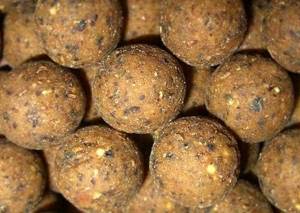
It is necessary to highlight several Criteria that the Mixture must meet:
The color of the bait should match the color of the bottom as much as possible, so when choosing a bag in the store, you should pay attention to what body of water it is intended for;
The bait must contain the bait that will be used for fishing. For example, crushed bloodworms or pieces of worm, or even better, dragonfly larvae from the same reservoir will irritate the carp and improve the bite;
The more components there are in the bait, the better. Experienced fishermen mix the mixture with corn, cereal, worms and maggots.
The golden rule is that bait for carp, as for any fish, must be fresh. The optimal time for its preparation is the evening before the next day of fishing.
In addition to choosing the right composition and color of the mixtures, it is necessary to be able to properly feed the prey in order to maximize the number of bites, and not reduce their chance to 0.
3 ways to improve your fish bite!
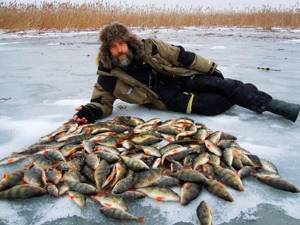
Over 15 years of active fishing, I have found many ways to improve the bite, and here are the most effective:
1. Bite activator . This pheromone additive attracts fish most strongly in cold and warm water. The Fish Hungry bite activator has proven itself to be excellent - Read more…
2. Tackle with increased sensitivity . You should first familiarize yourself with the features of using a particular type.
3. Pheromone baits . They attract the attention of fish, stimulate hunger and cause a schooling reflex, which allows you to collect a lot of fish in one place.
You can get the rest of the secrets of successful fishing for free by reading my other materials on the site.
3 ways to improve your fish bite!
Over 15 years of active fishing, I have found many ways to improve the bite, and here are the most effective:
1. Bite activator . This pheromone additive attracts fish most strongly in cold and warm water. The Fish Hungry bite activator has proven itself to be excellent - Read more…
2. Tackle with increased sensitivity . You should first familiarize yourself with the features of using a particular type.
3. Pheromone baits . They attract the attention of fish, stimulate hunger and cause a schooling reflex, which allows you to collect a lot of fish in one place.
You can get the rest of the secrets of successful fishing for free by reading my other materials on the site.
So, you have found a picturesque place to spend your holiday, take your time to untangle the gear, mark the place and throw 5 to 10 medium-sized balls of bait there.
The balls from the mixture must be made in such a way that when they are fed, they do not break into the water, but reach the bottom, where they create a feeding place.
